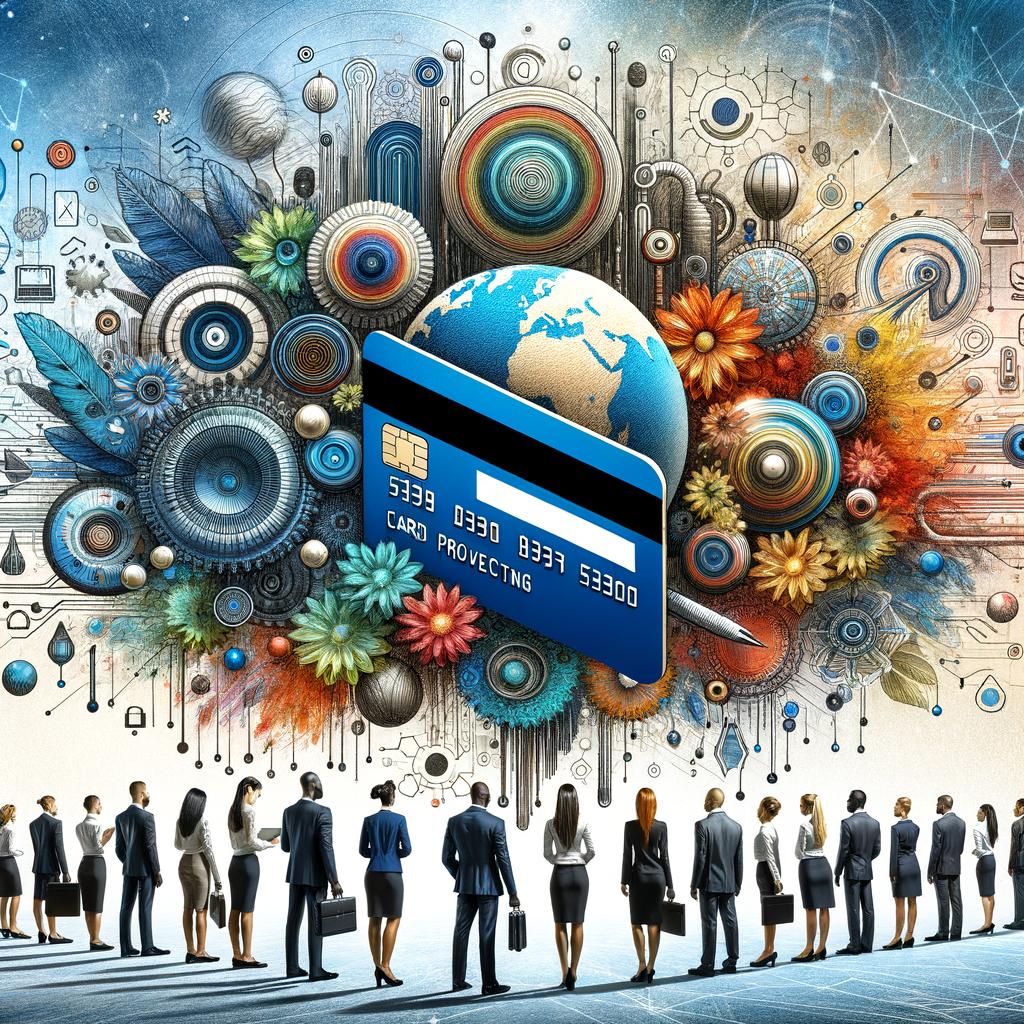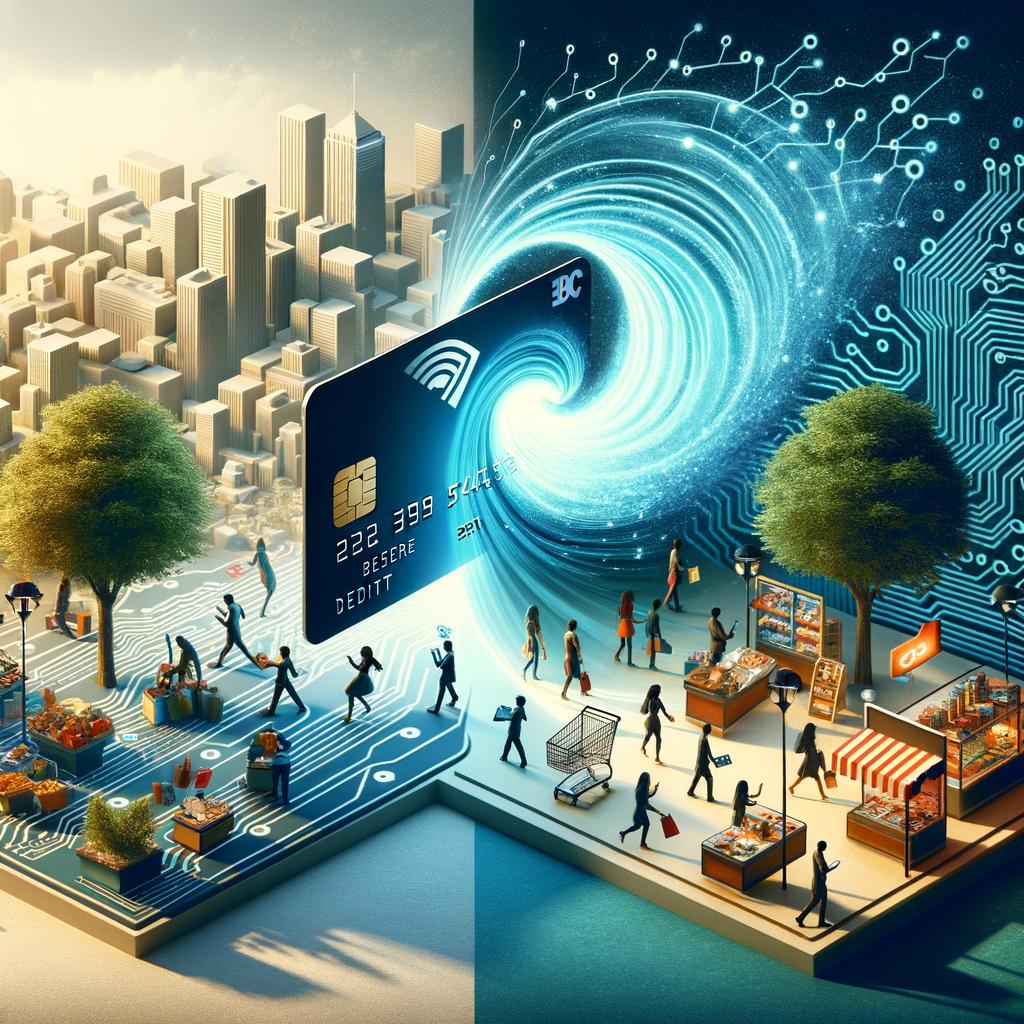Fraud prevention in card processing is a crucial aspect of running a successful business in today’s digital age. With credit card fraud cases on the rise, it’s important to train your staff on how to detect and prevent fraudulent activities before they happen.
So, how can you train your staff on fraud prevention in card processing? Well, the first step is to educate them about the different types of fraud that can occur, such as card skimming, carding, and phishing scams. By understanding how these scams work, your staff will be better equipped to identify potential threats and take action to prevent them.
Next, it’s important to train your staff on how to securely handle customers’ credit card information. This includes using secure payment processing systems, encrypting sensitive data, and following proper protocols for storing and disposing of card information. By emphasizing the importance of protecting customers’ data, your staff will be more likely to follow best practices and prevent fraud from occurring.
Another key aspect of fraud prevention training is teaching your staff how to spot red flags that may indicate fraudulent activity. This could include unusual purchasing patterns, multiple failed transaction attempts, or discrepancies in billing information. By encouraging your staff to be vigilant and report any suspicious activities, you can significantly reduce the risk of fraud in your business.
In addition to educating your staff on fraud prevention techniques, it’s also important to conduct regular training sessions to reinforce these principles and keep your team up to date on the latest trends in credit card fraud. By investing in ongoing training, you can ensure that your staff remains vigilant and proactive in preventing fraud.
Ultimately, training your staff on fraud prevention in card processing is not only a smart business decision, but it’s also a way to protect your customers and uphold your reputation as a trustworthy business. By taking the time to educate your staff on fraud prevention techniques, you can create a secure environment for both your business and your customers.
Are you a small business owner looking to expand your payment options and increase your revenue streams? If so, then you are probably considering setting up a merchant account to accept credit card payments. But before you dive headfirst into the world of merchant accounts, it’s important to understand the various fees and costs associated with this service.
Merchant account fees can vary widely depending on the provider and the type of business you operate. From transaction fees to monthly maintenance costs, there are a lot of factors to consider when choosing the right merchant account for your business. To help you navigate through the sea of fees and charges, we have put together a handy guide to compare merchant account fees.
When comparing merchant account fees, there are a few key things to keep in mind. First, you’ll want to look at the transaction fees charged by each provider. This is the fee that you’ll pay every time a customer makes a purchase using a credit card. Transaction fees can vary from provider to provider, so it’s important to shop around and find the best rate for your business.
In addition to transaction fees, you’ll also want to consider monthly maintenance fees. These are fees that are charged by the merchant account provider to cover the costs of processing your transactions each month. While some providers may offer lower monthly fees, they may make up for it with higher transaction fees, so it’s important to consider both costs when comparing providers.
Another important factor to consider when comparing merchant account fees is the setup costs involved. Some providers may charge an initial setup fee to get your account up and running, while others may offer this service for free. It’s important to weigh the setup costs against the ongoing fees to determine which provider offers the best value for your business.
By taking the time to compare merchant account fees, you can ensure that you are getting the best deal for your business. Whether you’re a small startup or an established business, finding the right merchant account provider can help you streamline your payment process and improve your bottom line. So don’t rush into a decision – take the time to compare fees and find the best merchant account for your business today!
In a world where convenience is key, contactless payments are revolutionizing the retail experience as we know it. No longer do we have to fumble for cash or swipe cards – a simple tap or wave of a phone or card is all it takes to complete a transaction. With the rise of technology, contactless payments are becoming more prevalent in stores, restaurants, and even public transportation systems.
Gone are the days of waiting in long lines while customers fumble for change or search for their credit card in their wallets. Contactless payments offer a seamless and efficient way to make purchases, saving both time and hassle for both customers and businesses alike. With just a quick tap, customers can now pay for their items and be on their way in a matter of seconds.
But beyond the convenience factor, contactless payments also offer a more secure way to complete transactions. With the use of encryption technology and tokenization, contactless payments are more secure than traditional swipe or chip-and-pin methods. This added layer of security helps to protect customers from fraud and identity theft, giving them peace of mind when making purchases.
The retail landscape is constantly evolving, and contactless payments are at the forefront of this transformation. As more and more businesses adopt this technology, customers can expect to see a shift in the way they shop and pay for goods and services. Contactless payments are not only changing the way we make purchases, but also how we interact with retailers and businesses.
So the next time you find yourself in line at a store, consider using contactless payments for a faster, more secure, and overall improved retail experience. Embrace the convenience and efficiency of contactless payments, and see how they are transforming the way we shop in today’s digital world.
In the fast-paced world of wholesale trade, efficiency is key. From sourcing products to managing inventory, every aspect of the business needs to be streamlined for success. And when it comes to payments, many wholesalers are turning to efficient card processing to simplify the process.
Gone are the days of cumbersome paper checks and manual invoicing. With the rise of digital payment solutions, B2B payments in wholesale trade are becoming faster, more secure, and easier to manage. By utilizing efficient card processing, wholesalers can improve their cash flow, reduce processing costs, and enhance their overall operational efficiency.
One of the key benefits of efficient card processing is the ability to streamline the payment process. With just a few clicks, wholesalers can securely send and receive payments, eliminating the need for long wait times and manual processing. This not only saves time for both the wholesaler and their customers but also ensures that payments are processed quickly and accurately.
Additionally, efficient card processing can help wholesalers reduce the risk of fraud and improve security. By using secure payment gateways and encryption technology, wholesalers can protect sensitive payment information and prevent unauthorized transactions. This not only gives wholesalers peace of mind but also builds trust with their customers, ultimately leading to increased sales and customer loyalty.
Furthermore, efficient card processing can help wholesalers gain better insights into their payment data. By tracking and analyzing payment trends, wholesalers can identify opportunities for growth, make informed business decisions, and optimize their cash flow. This data-driven approach can help wholesalers stay ahead of the competition and adapt to changing market conditions.
In conclusion, streamlining B2B payments in wholesale trade with efficient card processing can bring numerous benefits to wholesalers. From improving operational efficiency to enhancing security and gaining valuable insights, the advantages are clear. By embracing digital payment solutions, wholesalers can position themselves for success in an increasingly competitive market.
In today’s fast-paced digital world, the need for secure and reliable payment solutions is more important than ever. With the rise of e-commerce and online transactions, businesses are constantly searching for ways to streamline their payment processes while still adhering to industry regulations. This is where cloud-based payment solutions come into play.
Cloud-based payment solutions offer a convenient and efficient way for businesses to process transactions securely. By leveraging the power of the cloud, businesses can store and manage payment information in a centralized and secure environment. This not only reduces the risk of data breaches but also helps businesses comply with industry regulations such as PCI-DSS and GDPR.
One of the key advantages of cloud-based payment solutions is their ability to seamlessly integrate with existing systems and processes. This means that businesses can easily adapt to changes in regulations without having to overhaul their entire payment infrastructure. With the flexibility and scalability offered by cloud-based solutions, businesses can quickly respond to new regulations and ensure that their payment processes remain compliant at all times.
Furthermore, cloud-based payment solutions offer advanced security features such as tokenization and encryption, which further protect sensitive payment information from unauthorized access. By utilizing these security measures, businesses can not only protect their customers’ data but also build trust and credibility in the eyes of regulators and consumers alike.
In conclusion, cloud-based payment solutions are a valuable asset for businesses looking to align with industry regulations while providing a secure and efficient payment experience for their customers. By leveraging the power of the cloud, businesses can stay ahead of regulatory changes and maintain compliance while also benefiting from the scalability and flexibility that cloud technology offers.
In the modern world of retail, where brick-and-mortar stores, e-commerce platforms, and mobile apps all coexist, the importance of payment gateways cannot be overstated. These digital tools serve as the crucial link between customers and businesses, ensuring that transactions are smooth, secure, and convenient across all channels.
Imagine this scenario: you walk into a quaint boutique in town and find the perfect dress for an upcoming event. You proceed to the counter, eager to make your purchase. However, when you reach for your credit card, the cashier informs you that they only accept cash payments. Frustrated, you leave the store empty-handed, vowing never to return.
Now, contrast this with a different scenario: you browse your favorite online retailer’s website and add several items to your cart. When you’re ready to check out, you simply enter your payment information into the secure gateway, and voila! Your order is processed, and the items are on their way to your doorstep.
In the first scenario, the lack of a digital payment gateway hinders the customer experience and ultimately leads to lost sales for the business. In the second scenario, the seamless integration of a payment gateway enables smooth transactions and boosts customer satisfaction.
But it doesn’t end there. In today’s omnichannel retail landscape, where customers expect a seamless shopping experience across all touchpoints, the significance of payment gateways is even more pronounced. Whether a customer is browsing in-store, online, or on a mobile app, they should be able to make a payment easily and securely.
Moreover, payment gateways play a crucial role in data security, protecting sensitive customer information from cyber threats and ensuring compliance with industry regulations. By encrypting payment details and verifying transactions in real-time, these gateways provide peace of mind to both businesses and customers.
In conclusion, payment gateways are the unsung heroes of the retail world, facilitating transactions, enhancing customer experience, and safeguarding data. As technology continues to evolve and consumer expectations rise, businesses must prioritize the integration of robust payment gateways to stay competitive in the omnichannel landscape. After all, in a world where convenience is king, a seamless payment experience can make all the difference between a one-time sale and a loyal customer for life.
Navigating the world of credit card processing contracts can feel like diving into a deep, murky pool of confusing jargon and hidden fees. But fear not, fellow business owners, for there is hope! By arming yourself with knowledge and a healthy dose of skepticism, you can avoid some of the most common pitfalls that lurk beneath the surface.
One of the biggest mistakes that many businesses make is signing on the dotted line without fully understanding the terms of the contract. It’s easy to get caught up in the excitement of securing a new payment processor and rush through the paperwork, but this can lead to costly misunderstandings down the road. Take the time to read through the contract carefully, ask questions about anything that seems unclear, and never be afraid to negotiate for better terms.
Another common pitfall is getting hit with unexpected fees. Some processors may lure you in with low introductory rates, only to tack on hidden charges once you’re locked into a contract. Make sure you understand all potential fees before signing up, and watch out for things like monthly minimums, statement fees, and PCI compliance fees. By doing your homework upfront, you can avoid nasty surprises on your monthly bill.
Finally, don’t forget to consider the length of the contract and any potential early termination fees. Some processors may try to lock you into a long-term agreement with hefty penalties for ending the contract early. While it’s important to secure a stable processing solution for your business, you should also have the flexibility to switch providers if needed. Look for providers with shorter contract terms or month-to-month options to ensure that you’re not stuck in a bad deal.
In conclusion, navigating the world of credit card processing contracts can be a daunting task, but with a little research and vigilance, you can avoid some of the most common pitfalls. Take the time to read the fine print, understand all potential fees, and negotiate for better terms when possible. By staying informed and proactive, you can protect your business from costly mistakes and ensure a smooth payment processing experience for both you and your customers.
In today’s rapidly evolving business landscape, staying ahead of the curve is essential to success. With the rise of online transactions and digital payments, ensuring the security of customer data has become more important than ever. New payment security trends are constantly emerging, and businesses need to be aware of these developments to protect themselves and their customers.
One of the latest trends in payment security is the use of biometric authentication. Biometrics, such as fingerprint and facial recognition technology, offer a more secure and convenient way for customers to verify their identities when making payments. By incorporating biometric authentication into their payment processes, businesses can enhance security and reduce the risk of fraud.
Another key trend in payment security is the adoption of tokenization. Tokenization involves replacing sensitive payment data with a unique token that cannot be used for fraudulent purposes. This helps to protect customer information during transactions and reduces the risk of data breaches. Many payment processors now offer tokenization services to help businesses safeguard their payment processes.
Additionally, artificial intelligence (AI) and machine learning are being used to enhance payment security. These technologies can analyze large volumes of data in real time to detect fraudulent patterns and prevent unauthorized transactions. By harnessing the power of AI, businesses can improve their fraud detection capabilities and protect themselves against cyber threats.
It is important for businesses to stay informed about the latest trends in payment security and take proactive measures to safeguard their customers’ data. By implementing biometric authentication, tokenization, and AI-powered fraud detection tools, businesses can minimize the risk of security breaches and build trust with their customers. In today’s digital age, payment security is not just a priority – it’s a necessity.
Dynamic Currency Conversion (DCC) is a feature that has been gaining popularity among merchants and customers alike. But is it really as beneficial as it seems, or are there hidden drawbacks that we should be aware of? Let’s take a closer look at the pros and cons of DCC for both parties involved.
For merchants, the biggest advantage of DCC is the potential for increased revenue. By offering customers the option to pay in their home currency, merchants can attract more international customers who might otherwise be hesitant to make a purchase due to currency exchange rates. This can lead to higher sales volume and an overall boost in profits. Additionally, DCC can simplify the payment process for customers, making transactions faster and more convenient.
However, there are also some drawbacks for merchants to consider. For one, DCC can come with additional fees that merchants may have to pay, cutting into their profit margins. Furthermore, some customers may be wary of DCC and prefer to pay in the local currency to avoid potential hidden fees or unfavorable exchange rates. This could result in lost sales opportunities for merchants who only offer DCC as a payment option.
As for customers, the main benefit of DCC is the transparency it offers in terms of pricing. With DCC, customers can see exactly how much they will be charged in their home currency, making it easier to budget and plan their spending. This can be especially helpful for tourists or frequent travelers who may be unfamiliar with the local currency.
On the other hand, there are some downsides to DCC for customers as well. One of the biggest concerns is the potential for unfavorable exchange rates when using DCC. In some cases, merchants may use inflated exchange rates to markup prices and make a profit on currency conversion. This means that customers could end up paying more for their purchase than if they had paid in the local currency.
In conclusion, while DCC can offer benefits for both merchants and customers, it is important to weigh the pros and cons before deciding whether to use this feature. Merchants should consider the potential for increased revenue against the possibility of additional fees and lost sales opportunities. Customers, on the other hand, should be aware of the potential for unfavorable exchange rates and hidden fees when using DCC. By being informed and making informed choices, both parties can make the most of dynamic currency conversion.
In a world where technology is constantly evolving, the event management and ticketing industries have not been left behind. Gone are the days of long queues and paper tickets. Thanks to card processing innovations, event organizers can now easily manage ticket sales and streamline the check-in process for attendees.
One of the most exciting developments in this field is the introduction of contactless payment technology. No longer do attendees have to fumble for cash or swipe their card at a terminal. With a simple tap of their card or smartphone, they can quickly and securely purchase tickets and gain entry to the event. This not only speeds up the process but also enhances the overall experience for everyone involved.
Another innovative solution that has been gaining popularity is the use of mobile card readers. These compact devices allow event organizers to accept card payments on the go, whether they are selling tickets at the door or from a booth at a festival. This flexibility is a game-changer for small-scale events and pop-up markets, where traditional card terminals may not be feasible.
But perhaps the most radical innovation in card processing for the event industry is the integration of biometric authentication. Imagine a world where attendees can simply scan their fingerprint or retina to gain access to an event, eliminating the need for physical tickets or cards altogether. Not only does this enhance security, but it also reduces the risk of ticket fraud and scalping.
With these advancements in card processing technology, event organizers have the tools they need to create seamless and memorable experiences for their attendees. Whether it’s a music festival, a sports game, or a corporate conference, these innovations are revolutionizing the way we buy and sell tickets. So next time you attend an event, keep an eye out for these cutting-edge solutions that are shaping the future of the industry. Event management will never be the same again!











